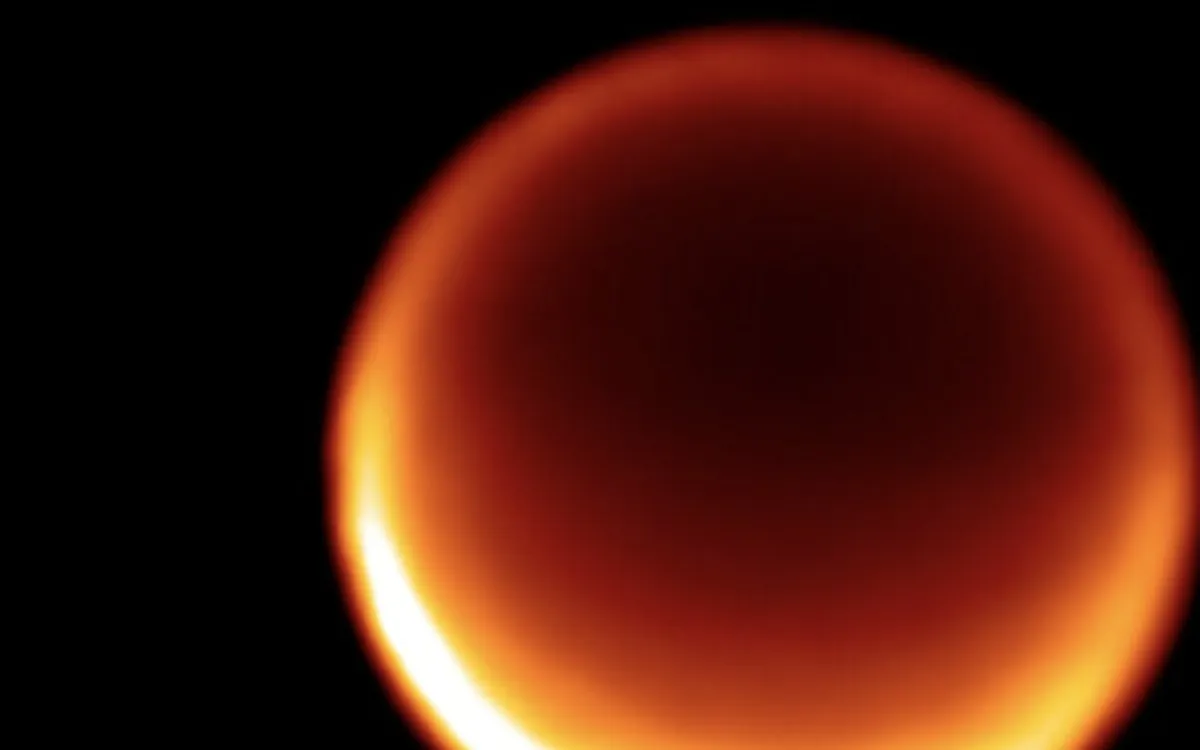
Saturn’s most intriguing moon, Titan, has captured the attention of scientists with its unique atmospheric phenomena. Unlike Earth, where rain is primarily composed of water, Titan experiences cold, oily rain made up of methane. Recent research has unveiled groundbreaking evidence of cloud convection occurring in Titan's northern hemisphere, where massive lakes of liquid methane reside. This discovery provides new insights into the moon’s unusual climate and hydrological cycle.
For the first time, researchers have documented the shifting of methane clouds over Titan's eerie lakes. By leveraging data from the James Webb Space Telescope and the Keck Observatory in Hawaii, a team of scientists observed these clouds rising to higher altitudes over time. The findings, published in the journal Nature, highlight the dynamic nature of Titan’s atmosphere, particularly in the northern hemisphere where most of its liquid methane lakes are concentrated.
This significant discovery allows scientists to gain a deeper understanding of Titan’s climate cycle. According to Conor Nixon, a research scientist at NASA Goddard Space Flight Center and the study's lead author, “This enables us to better understand Titan’s climate cycle, how the methane clouds may generate rain and replenish methane evaporated from the lakes.” Such insights are crucial for comprehending how Titan’s atmosphere interacts with its surface and the implications for its potential habitability.
Titan is unique in our solar system, being the only moon to possess a substantial atmosphere. However, its surface is often obscured by a dense layer of yellowish smog. To explore different depths of Titan's atmosphere, scientists employed various infrared filters on both the Webb and Keck telescopes. They observed Titan during two separate periods, in November 2022 and July 2023, capturing the movement of clouds in the moon's mid and high northern latitudes.
This research confirms that Titan has an Earth-like hydrological cycle, albeit one that operates with methane and ethane instead of water. NASA points out that Titan is the only other celestial body known to exhibit a cycle where liquids rain from clouds, flow across the surface, fill lakes and seas, and evaporate back into the atmosphere. Despite its frigid temperatures, Titan remains a focal point for astronomers due to its rich organic chemistry, which could provide clues about the potential for life in extreme environments.
The recent findings also shed light on how celestial bodies evolve over time. Nixon noted, “On Titan, methane is a consumable. It’s possible that it is being constantly resupplied and fizzing out of the crust and interior over billions of years.” If this process were to cease, Titan could eventually transform into a mostly airless world characterized by dust and dunes, highlighting the importance of ongoing research into this fascinating moon.